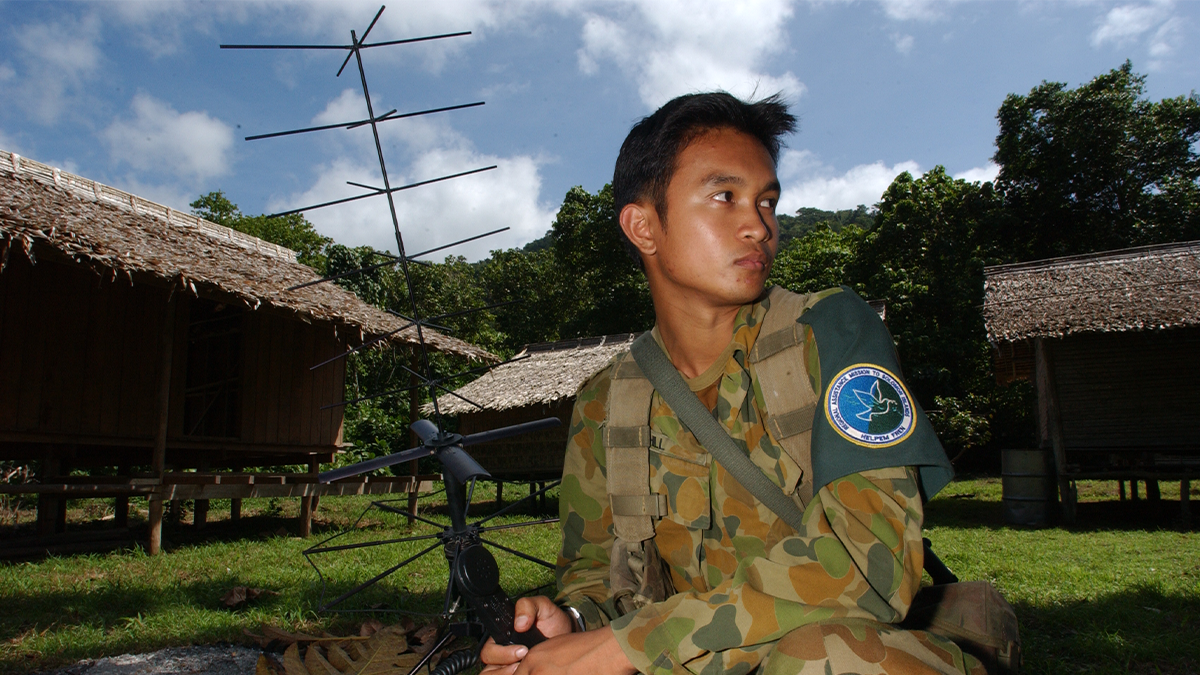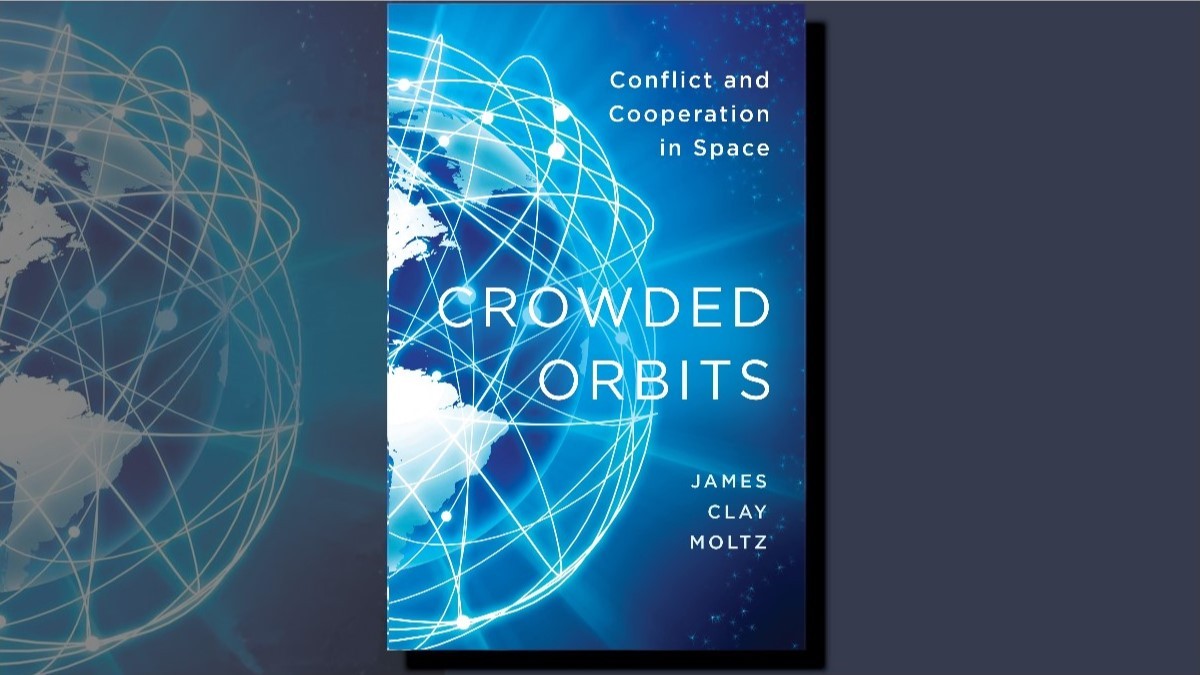The ADF as an Information Operation
When responding to the strategic challenges in the Indo-Pacific, the Australian Defence Force (ADF) is employed as a tool of coercion and deterrence. In regional peacekeeping, for example, where the Australian Federal Police (AFP) is charged with maintaining order and controlling crime alongside the indigenous police forces, the ADF is used as an instrument of persuasion against the greater sources of violence and instability. Within this role, the ADF can be thought of as an ‘information operation’ (IO). It begs the question then, how has the ADF been successful in this role and how might it improve in the future?
While the ADF has a working definition of what an IO is, it does not fully capture their strategic purpose, nor illustrate how this method of deployment may work. The United States, however, uses a much more holistic definition, referring to IO as ‘…[T]he application of force and the employment of information with the goal of affecting the perception and will of adversaries.’ This amounts to deploying military assets and capabilities in such a way that it influences the emotions, motives and behaviour of targeted individuals, in order to become more favourable to the influencer. In cases such as regional peacekeeping, this means using the ADF in such a way that their mere presence is aimed to coerce sources of threat to cease hostilities. Critically, this allows the ADF to continue to serve in a support role, without resorting to force.
The ADF was employed in such a way in the initial stages of the RAMSI operation in 2003. Upon entering the Solomon Islands, the objective was suppressing the violent insurgency in the rural areas of Guadalcanal Island. This was accomplished by deploying AFP and RSIP[i] forces, conducting deep and widespread patrols across the island, collecting firearms and arresting members of the insurgency. To assist this central aim, a massive military component was utilised in order to increase the authority and perceived capabilities of the operation, and to create an environment of compliance within the indigenous population. Nick Warner, the special coordinator of RAMSI, described the ADFs role thus:
‘To have deployed with only a token military presence would have been to invite sceptical militants who were feeling threatened to take on RAMSI, hoping to destabilise the mission. Instead, the size and capability of the RAMSI military force got their attention and helped convince them of the need to co‐operate.’
The ADF sought to influence the behaviour and motives of the Solomon Islands to become more aligned with the peacekeeping campaign. To accomplish this, the ADF attempted to instil the message of their overwhelming technological superiority. To start, the HMAS Manoora was deliberately placed just off-shore the major city of Honiara, with patrol helicopters regularly scheduled flying in and out across the island. The ADF highlighted the range of its capabilities to the locals by joining the police on patrols into the rural regions of the island, and giving public demonstrations on how their military technology worked. This included demonstrations of night-vision goggles, ground sensors and UAVs. To aid the search for firearms, the ADF used mine detectors in a visible way, searching for weapons caches buried in the ground. These public displays of the capabilities the ADF possessed had a strong effect on the people in Guadalcanal. Some members of the population even believed that the ADF could see inside their houses, or even read their minds to determine if they were telling the truth. With the punishment of a heavy fine and years of imprisonment for not turning in firearms, many of the population determined it was best to comply with the police forces. The results of this strategy was an enormous success in turns of the firearms confiscations, and the willing surrender of the insurgent leader, Harold Keke.
While this was a demonstrably effective operational strategy in the Solomon Islands, it is possible that the presence of military forces is only effective against loosely organised, weak-willed insurgencies. State-based militaries may anticipate the ADF’s reluctance for contact, diminish their coercive effect. In 2006, for example, Operation Quickstep attempted to demonstrate military resolve in the lead-up to the Fijian military coup by deploying a vast array of naval assets off the coast of Suva. This failed to aid Australia’s diplomatic objectives because the Fijian military understood that the ADF would never actually deploy. Furthermore, better coordinated insurgencies may be capable of diminishing the effects of IO through counterpropaganda. The Taliban, for example, were able to effectively diminish the United States’ militaries attempts to assert their overwhelming technological superiority, by instilling reinforcing messages into their rank-and-file. Thus, while this method of using the ADF is currently effective, efforts should be made to improve their deterrence, and enhance their capability to act as an IO.
One possible solution may be adopting recommendations tailored for responding to ‘grey-zone’ operations. These methods utilise postured military forces in ways which are clearly aggressive to the adversary, but fall short of outright declaring war. In sum, they achieve the objective of deterrence. A 2019 report by RAND outlines multiple recommendations that, while designed for the US military against great power competition, can be applied for the ADF in the Asia-Pacific. These include generating regional military responses to a broader range of threats, as well as conducting new exercises and training in targeted countries. Recent actions undertaken by the Australian government reflect these priorities, and include the Pacific Step-Up and the Pacific Maritime Security Program. More substantially, however, are actions that directly reinforce the resolve and threat of the ADF. This includes conducting discrete military or paramilitary operations in the region to signal intent, or responding to hostile insurgent groups who engage in military confrontations with direct, kinetic force when necessary. This signals commitment to the region, enforces red-lines, and reinforces deterrence to conduct aggressive actions. In essence, it would heighten the ADF’s deterrent capabilities and enhance its role as an IO.
Australia’s widening range of strategic interests within the region can be better served by an ADF which is capable of influencing a target population. This can be accomplished by adopting the lessons of projecting coercion and deterrence, and applying them towards regional engagements, such as peacekeeping. The ADF have proven to be quite effective at persuading non-aligned, hostile sources of instability to submit to Australia’s influence. However, if Australia develops stronger, more organised adversaries, it may find the ADF in its current form as being less effective as an IO. To assist the broader elements of Australia’s regional strategy, the ADF may have to heighten its deterrent capacity.
[i] Royal Solomon Islands Police Force
The views expressed in this article and subsequent comments are those of the author(s) and do not necessarily reflect the official policy or position of the Australian Army, the Department of Defence or the Australian Government.
Using the Contribute page you can either submit an article in response to this or register/login to make comments.




